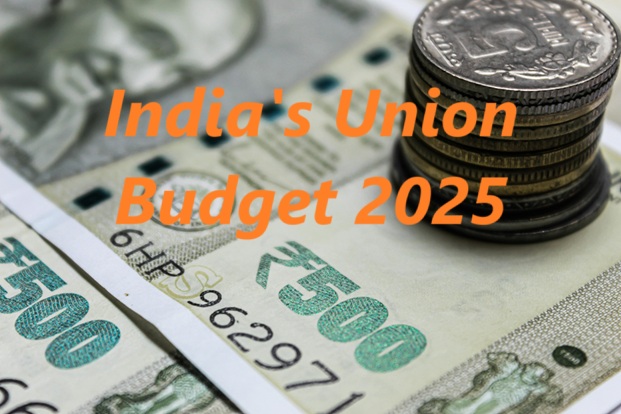Union Budget 2025~2026 : Introduction
On February 1, 2025, Finance Minister Nirmala Sitharaman presented the much-anticipated Union Budget 2025. This budget, the eighth under her leadership, was designed to propel India’s economic growth while prioritizing the middle class, infrastructure, employment generation, and the gig economy. With a strong focus on capital expenditure, taxation reforms, and sectoral development, this budget aims to bolster India’s path toward a “Viksit Bharat.”

Key Highlights
Taxation Reforms: A Major Relief for the Middle Class
One of the most significant announcements in the budget was the increase in the tax exemption limit. Under the new tax regime:
- No income tax will be levied on annual incomes up to ₹12 lakh.
2. The Section 87A rebate was revised, increasing the limit from ₹7 lakh to ₹12 lakh, with a maximum rebate of ₹60,000.
3. Revised tax slabs:
Up to ₹4 lakh – 0%
₹4 lakh to ₹8 lakh – 5%
₹8 lakh to ₹12 lakh – 10%
₹12 lakh to ₹16 lakh – 15%
₹16 lakh to ₹20 lakh – 20%
₹20 lakh to ₹24 lakh – 25%
Above ₹24 lakh – 30%
The new tax regime is expected to provide substantial tax savings, especially for young professionals and middle-class families.
Capital Expenditure (Capex) Boost

The budget allocated ₹11.21 lakh crore for capital expenditure, slightly higher than ₹11.11 lakh crore in FY2024-25.
A significant portion of this funding is directed toward infrastructure projects, including railways, highways, and urban development.
Support for Agriculture and MSMEs
The Kisan Credit Card loan limit was increased from ₹3 lakh to ₹5 lakh.
A new Mission for Aatmanirbharta in Pulses was introduced, focusing on self-sufficiency in pulse production.
The PM Dhan-Dhaanya Krishi Yojana was launched to benefit 1.7 crore farmers across 100 districts.
The government also announced a Makhana Board in Bihar to boost production and marketing.
Job Creation and Gig Economy Support
The government announced 22 lakh new jobs under a focused employment generation scheme targeting the footwear and leather industry.
Gig economy workers are now included in national welfare schemes and will receive identity cards for easier access to benefits.
Healthcare for gig workers under the PM Jan Arogya Yojana was also introduced.
Healthcare and Lifesaving Drugs
In a move to make healthcare more affordable, the government exempted 36 lifesaving drugs from basic customs duty. This includes cancer medications and other critical treatments, ensuring better access for patients.
Infrastructure and Transport

The UDAN scheme was expanded to enhance regional air connectivity, aiming to connect 120 new destinations and serve 4 crore passengers over the next decade.
A new Urea plant in Assam was announced with an annual capacity of 12.7 lakh metric tonnes.
Energy and Clean Tech Initiatives
The government launched a Nuclear Energy Mission for Small Modular Reactors (SMRs) with an allocation of ₹20,000 crore.
Energy sector allocations rose by 18% YoY, reaching ₹81,174 crore.
Basic customs duty on wet blue leather was fully exempted to boost domestic production.
Tax exemptions were extended to solar PV cells, lithium-ion batteries, and telecom equipment to support green energy initiatives.
Foreign Direct Investment (FDI) in Insurance
The FDI limit in the insurance sector was increased from 74% to 100%, attracting global investments while ensuring domestic fund allocation.
Defence and National Security
The Defence budget was increased to ₹4.91 lakh crore for FY2025-26.
Emphasis was placed on strengthening domestic manufacturing in defence under the Aatmanirbhar Bharat initiative.
Tourism and Real Estate
The government introduced measures to develop 50 major tourist destinations, in collaboration with states.
The Swamy Fund 2 with ₹15,000 crore was introduced to boost real estate investments.
Restrictions on claiming two properties as self-occupied for tax purposes were lifted.
Market Borrowings and Fiscal Deficit
Fiscal deficit is projected at 4.8% of GDP, down from previous estimates.
Market borrowings are pegged at ₹11.53 lakh crore.
Sectoral Allocation Overview
| Sector | Allocation (₹ Crore) |
| Defence | 4.91 lakh |
| Energy | 81,174 |
| IT & Telecom | 95,298 |
| Capital Expenditure | 11.21 lakh |
| Agriculture | Increased KCC, New Yojanas |
| MSMEs | Increased Credit Cover |
Conclusion
The Union Budget 2025 emerges as a pro-middle class, growth-oriented financial plan, focusing on employment generation, infrastructure, taxation relief, and economic expansion. With its balanced approach towards fiscal consolidation and welfare spending, it lays a strong foundation for India’s ambitious Viksit Bharat vision.
Disclaimer
This blog provides an overview of the Indian Union Budget 2025, based on official announcements and publicly available data. While every effort has been made to ensure accuracy, readers are encouraged to verify details with official government sources. This article does not constitute financial, legal, or investment advice. Readers should consult professionals before making any financial decisions based on the budget announcements.


Recent Comments